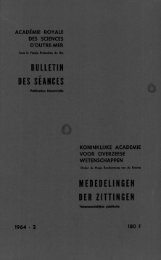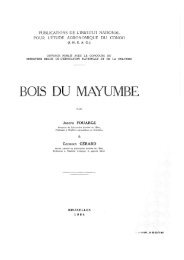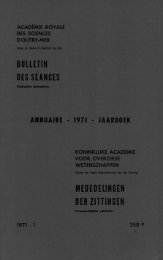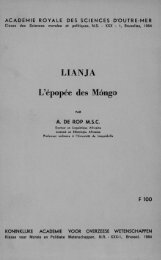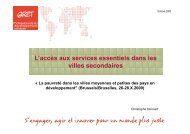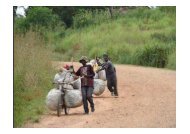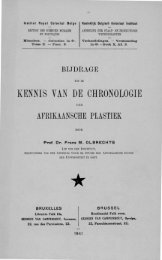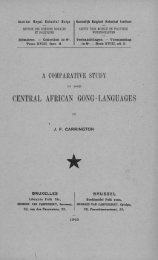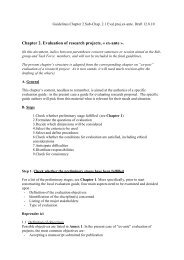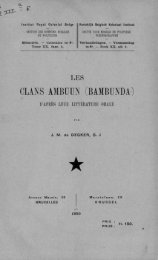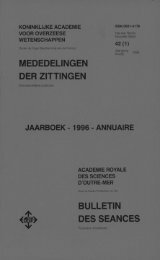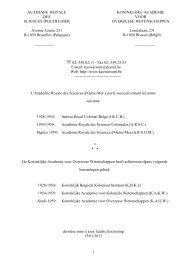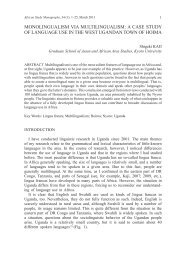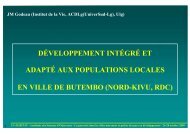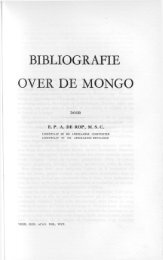KONINKLIJKE ACADEMIE VOOR OVERZEESE WETENSCHAPPEN ...
KONINKLIJKE ACADEMIE VOOR OVERZEESE WETENSCHAPPEN ...
KONINKLIJKE ACADEMIE VOOR OVERZEESE WETENSCHAPPEN ...
Create successful ePaper yourself
Turn your PDF publications into a flip-book with our unique Google optimized e-Paper software.
— 296 —<br />
Chlorophyta (14 taxa) and Euglenophyta (8 taxa) and finally Bacillariophyta<br />
(4 taxa). These results show higher diversity in both treatments in Vinh Long<br />
province in comparison with the number of phytoplankton taxa in culture systems<br />
of the Mekong Delta.<br />
Typically, the main species of phytoplankton were: Melosira varians,<br />
Nitzachia acicularia, Synechonecystis aquatilis, Coelosphaerium kutzingia,<br />
Oscillatoria limosa, Synechonecystis aquatilis, Polycystis incerta, Lyngbya<br />
birgei, Pediastrum biradistum, Scenedesmus dimorphus, Pediastrum biradistum,<br />
Euglena spirogyra, Phacus alata, Phacus pleuronectes. The mean of phytoplankton<br />
density in both treatments ranged from 59.856 ± 6.154 cells. 1' to<br />
212.694 ± 142.439 cell. 1 ' (fig. 14). The density of phytoplankton was the highest<br />
in samples 2 and 3 and the lowest in sample 1 for both treatments. The reason<br />
of low density of phytoplankton was low water level by selection for bigger<br />
fish after nursing and new water was supplied. Hence, the flood did not affect the<br />
water quality and fish decreased eating in cold weather and superfluous food was<br />
increased. Flooding did not affect phytoplankton density in samples 2 and 3 but<br />
cold weather decreased activity of fish eating. This led to superfluous food and<br />
to the increase of nutrient in ponds and the improvement of phytoplankton density<br />
in intensive culture systems.<br />
3.2.2. Zooplankton<br />
Time (months)<br />
—• — Treatment 1 —■— Treatment II<br />
Fig. 14. — Density of phytoplankton (cell/1) in intensive culture system.<br />
The results presented in figure 15 show that the number of zooplankton taxa<br />
was 36, the main species was Rotatoria (14 taxa), followed by Copepoda<br />
(12 taxa) and Protozoa (10 taxa), and finally Cladocera (6 taxa). The main<br />
species of zooplankton in both treatments were: Centropyxis ecomis, Difflugia



